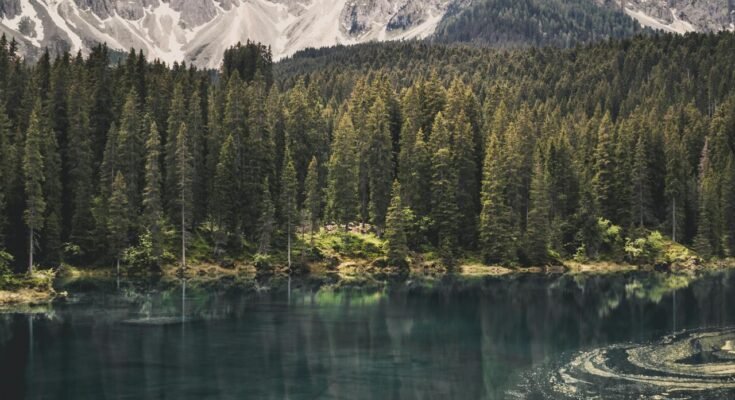The word “environment” became the basis of discussions on the well-being of the planet, existence of humankind, and sustainability. What is the source of the term environment, and how did it take its course to become the pressing issue it is today? This article discusses the origins of the environment word, its various meanings, and its increasing attention in society today.
Etymology
The term “environment” comes from the French word environner, which means “to surround” or “to encircle.” It entered the English language in the early 19th century as referring to the physical surroundings or conditions in which a person, animal, or plant lives. In time, it has included both the natural world and the myriad of complex human effects on it.
In its simplest image, environment encompasses all that surrounds us — the air we breathe, the land below our feet, the water we drink, it also includes the other organisms that share our space. The environment is not only the stage where human activities take place; in fact, it is a dynamic interrelated system where all elements — biological, physical, and chemical — are in constant interaction among themselves.
Broader Concepts of the Environment
While the term originally referred to physical surroundings, its scope has widened in recent years to include several dimensions that influence and are influenced by living beings. All in all, the prevailing perception of environment consists in signifying natural environment and indeed the anthropogenic environment.
- To begin with:A natural environment can be said to encompass land and sea ecosystems, forests, oceans, rivers, mountains, and the atmosphere. This would have been influenced by natural phenomena such as weather, climate, geological activity, and biogeochemical interactions. The resources for survival, such as food, water, and shelter, as well as oxygen, are provided by the natural environment. The natural environment maintains the balance of life on earth.
- To elaborate further:The human-made environment describes cities, roads, factories, agriculture, and infrastructure established to meet various human needs. As societies began to evolve, mankind’s ability to alter the environment was likewise developing. While developments in this area supply shelter, food, and transportation, they have also led to environmental destruction in the form of pollution, habitat destruction, and the consumption of resources.
Late 20th Century
One of the earliest thinkers advocating conservation was Henry David Thoreau, whose work in the 1800s paved the way for the environmental movement. Still, only in the mid-20th century did environmental concerns have a fair share of public attention. In the year 1962, the publication of Rachel Carson’s Silent Spring struck a concerted spark towards broader awareness about the destructive effects of human activities on the environment.
In the following years, environmental organizations and movements gained traction; the 2nd United Nations Conference on the Human Environment in Stockholm marked a turning point in the history of world environmental policy-making. This was the first major international forum concerning environmental issues, which, subsequently, could create the United Nations Environment Programme.
Present-Day Importance of the Environment
These days, environmental issues are at the forefront of our political, scientific, and social agendas. Environmental importance has long passed simply being about conservation, moving towards sustainability, climate change, and human impacts on the ecosystem of the earth. Global challenges like deforestation, biodiversity loss, ocean pollution, and increased greenhouse gas emissions present themselves as poetry of environmental destruction at the behest of human activity.
Among them, perhaps none so alarming as climate change. It is caused by the emission of carbon dioxide through burning fossil fuels, deforestation, and industrial activity; it addresses altered weather patterns, ice melting in polar regions, and sea-level rise. The results of climate change directly endanger ecosystems, humankind health, and economies worldwide; thus, climate action has now become a priority in the minds of governments, businesses, and individuals alike.
The Ecosystem in Flux
The environment, changing due to unwelcoming waves in time, brings new challenges as world population inexorably increases and urbanization picks up speed. The tension between the development of humanity and the sustainability of its environment has long been noted. Using some of the newest technologies involving solar power generation and green technologies is a high touchstone for national development or for a technology-based industrialization path choice. Yet, it is no less important how we would change the way we have traditionally understood our relationship to that environment.
Environmental education, activism, and global cooperation allow for the creation of an environmental stewardship ethos. Only when we begin to explore the meaning of the word “environment” and the historical trends that increased its importance to mankind will we understand what we owe ourselves in protecting the earth. This way, we can provide our environment, or the earth as we know it, with optimal conditions for any future generation to thrive.
Conclusion
From a French word meaning “to surround,” environment has expanded to encompass a very wide range of both natural and human artifacts that shape life on earth. As the challenges that involve the environment are recognized at an increased magnification, one realizes that the environment is the basis of human survival and their quality of life. In addressing issues such as climate change and resource depletion, the urgency of protecting the environment for generations cannot be overstated. Environment is not a place but a foundation upon which all of the things we value lie.



